A “Great Week” for Precious Metals Investors - Weekly Wrap Up (April 24, 2020)
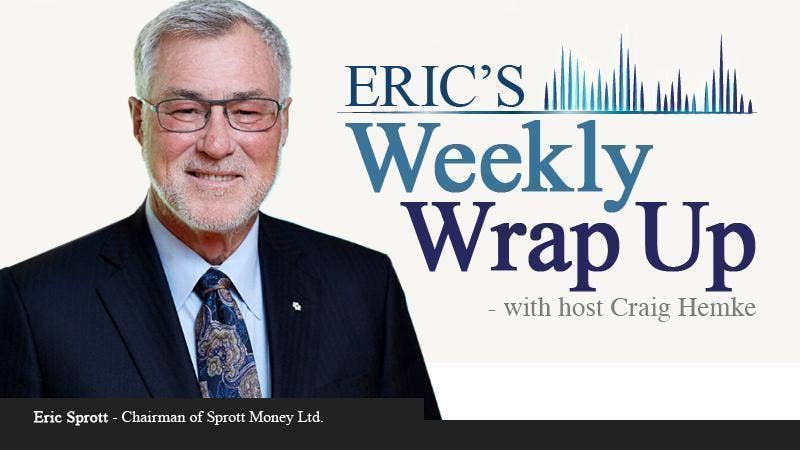
April 24, 2020
As we learn more about the coronavirus, there is a lot to be hopeful about—both for precious metals investors and the general public at large. Host Craig Hemke and Eric Sprott talk about the latest developments, including the impact higher gold prices are having on the mining sector and the potential for future gains.
In this edition of the
Weekly Wrap-Up, you’ll hear all the gold and silver news you need, including:
- The best thing we can do right now
- What kind of recovery to expect
- Plus: the “big winner” in precious metals
“Let me start off with the one negative I saw this week. There’s about five or six positives, OK? But I’m changing a view here on coronavirus, and I think I can see sort of the light at the end of the tunnel. I’ll start off with the one negative… they have determined that this coronavirus does mutate. That there have been identified, I think, something like thirty-one different mutations. And that the strongest mutation is 270 times stronger than the weakest mutation. And that’s a little disconcerting, because it’s hard to get a vaccine for something that changes that much.”
Transcript
Announcer: You're listening to the "Weekly Wrap-Up" on Sprott Money News.
Craig: Well, greetings once again from Sprott Money News at sprottmoney.com. It's Friday, April 24th, of the year 2020. It's time for your "Weekly Wrap Up." I'm your host, Craig Hemke and joining us as usual, this fine Friday morning is Eric Sprott himself, Eric. Good morning.
Eric: Hey, Craig. I would say a great, great week for precious metals investors and probably lots of good stuff to look forward to here.
Craig: Boy, it sure seems that way. We've got a lot to cover. As most folks know, Sprott Money has been temporarily closed this month, as many businesses are both in Canada and the U.S. And we've also got some shortages out there of coins and bullion, but we're making some progress. So for all of you out there still waiting to purchase gold and silver products. I can tell you that Sprott Money is starting to receive some inventory. The couriers still have protocols in place that make it difficult to ensure our shipments. So we're working very hard to fully open our online store and make deliveries as soon as possible. We'll keep updating you in the days and weeks to come. But boy oh, boy, the demand for physical gold and silver continues, Eric, and it's certainly ramping up with all the response to Coronavirus. But let's start there. I know you've seen a few interesting things this week that you want to share with everybody.
Eric: Sure. Let me start off with the one negative I saw this week, there's about five or six positives, okay. I'm changing a view here on Coronavirus that I think I can see sort of the light at the end of the tunnel. I'll start off with the one negative, and the one negative was that they have determined that this Coronavirus does mutate, that there had been identified I think something like 31 different mutations and that the strongest mutation is 270 times stronger than the weakest mutation. And that's a little disconcerting. Because it's hard to get a vaccine for something that changes that much. So that's my one major negative. In terms of, I think the best thing that we can do is reopen the economy in a controlled fashion as soon as possible. Why do I say that? Well, first of all, there's some new numbers out that were quite shocking. Probably the most shocking one was there was a homeless shelter in Boston that had 400 people staying there. They tested everybody apparently. And something like 147 of them had COVID-19, but none of them none of them had symptoms. That is a startling, startling revelation and I don't even know the reason. All I know is nobody there suspected anything, and yet 147 of them had it.
What if that's the case in other places? One other place was the USS Roosevelt, which has 4000 sailors on it. They had 678 people test positive. One person has died, and five are in the hospital. Well, that morbidity rate, and that rate of hospitalization is nothing like what we've seen so far for, I'm gonna say for the general population, which really is an older population. Because the disease has gone to the weakest, the nursing homes and the prisons and boats and things like that where people are kind of trapped in a particular environment. But the fact that we are finding out that a lot of people have had the Coronavirus. Unfortunately, one of the great weaknesses, both in Canada in the U.S. we don't have the tests. If we had more tests, we'd probably find out that a lot of people have had it. And then of course, the more people that have had it that survived it would cause mathematically the morbidity rate to go down dramatically. And I was actually watching something on Bloomberg. And it suggested that people under 50, the morbidity rate is 0.1%. Well, 0.1%, that's the same as the flu.
So, I actually believe we should open things back up again. And that's sort of the message of these numbers. And I know there's lots of cases still, but we do still have, a lot of vulnerable people, and that's who's being attacked here. And I think that young people are almost exempt from it. So, for example, if somebody said people under 40 back in the pool, I'd be all for it. So I think we can see our way around this. I think we have to face the morbidity. Because what is the morbidity for prolonged depression? That has consequences too. And there's serious, serious consequences, like, life changing consequences for everybody now, not just the people that died, everybody. And I think there's a measurement, a relativity there, that has to be taken into consideration.
Craig: There are risks with everything else in life. And if the ultimate risk of something like this is commensurate with so many other risks that we already deal with, then you're right. I think that's the direction this is going. And that has significant implications for all the markets, including the precious metals, obviously, right, Eric, I mean, with all these cash that they've created.
Eric: Totally well. As an owner of a mine, I mean, the one thing I've always worried about is well, what if you have to shut down the mine and you, as the owner have to keep it operating, which is just money going out all the time and nothing coming in. And I kind of sense that pretty soon we'll back at it here. I know, for example, in Canada, here in Quebec, Quebec government has basically said to the gold miners, "You can go back into production." We're still out in lots of other countries. But I suspect that given the passage of time, given all the new mathematical evidence of the lesser morbidity, I think the odds are that we'll wanna take the chance, it's not even a chance, we'll measure the risk of one versus the risk of the other and decide that we should be going back to work.
Craig: Right. Right. Do you think, Eric, that realization is all part of what's driving the shares now? I mean, we had a lot of other good news that we wanna make sure we talk about, but boy, oh, boy, what a tremendous run we're currently in the middle of.
Eric: Yeah, I don't think that, and the reason I don't... First of all, I think the reason the stocks are up is because the Fed has just flooded the system with money, the Fed and the Treasury for that matter. I think that's what's boosted things. And of course, I think people have a naturally optimistic bent, and we probably have the plunge protection team in there. I still think that economically, we have a debt crisis. We saw how quickly the debt thing blew up, I mean, it blew up in a week. Whether it was the repo, whether it was the high yield, whether it was the commercial paper market, I mean, these things are all blowing up. Explosion here, explosion there, the Fed would come and say, "Oh, we'll take care of that, we'll take care of money market funds, we'll take care of commercial paper, we'll take care of mortgages, we'll take care of bonds, we'll take care of high yield."
The debt market exploded. It just the Fed came in to solve it. So it doesn't mean in the long run the problem solved here. And I suspect it won't be, I think, from an economic perspective... First of all, going back to work does not give you a V shaped recovery. Because I don't think it's gonna be everyone back in the pool. We still have to protect a certain element of society. We won't be doing things. We won't be going to games or attending church masses, or going to tight seated restaurants. That's not gonna happen. So it's gonna be a, I don't know what kind of recovery some guy described as a Nike swoosh, i.e., kind of a slow move up here. I suspect that's what's gonna happen and, unfortunately, we don't know what the financial consequences are of this yet. But that will play out in time. In other words, who's going broke? We'll see. It's a little early yet.
Craig: We talked last week, Eric, about the idea of stagflation. Kind of like, the whole decade of the '70s but kind of condensed, in the next three, four years, and we know from history, what a great time the '70s were for the precious metals in the mining shares. So far, let me lay these numbers on you the QE to infinity, if you will, was announced on March, the 23rd. So one month and a day ago. In the time since, yeah, the overall stock market's doing great up 22% but Gold's up 18. Silver's up 25% in a month, but the big winner and I know you know this, is something like the GDX the gold mining ETF up 65% in a month. How about that?
Eric: Right, and just about ready to explode. And on the precious metals front, there's been some interesting developments this week. Very interesting. One that most people would have seen was that Bank of America Merrill Lynch basically suggested the price of gold could go to 3000. Because you can't print gold, but you can print money and we are printing money. I've discussed before a company called Technical Traders, Christopher Vermeulen. He came up with a buy on gold on Tuesday afternoon. Very good timing here suggesting it'd go to first targets around 1800, second targets around 1900. And he's been very good.
I've talked about this. Now this will be the third week in a row I've mentioned this next topic. As gold and silver have gone up here, the open interest is not going up. And typically, the commercial banks, as gold would go up, they would short into the market, they're not shorting into the market. And that's why we get these moves of 20s, 30s, 60s, 50s. It's unheard of. Because they're not gonna stop it. And I don't know this particular reason they're not gonna stop it, but first on the list would be they know there's no metals, physical metals. That's one. They're way over levered on the short side. That's two. They see the printing of money, three. They see the buying of physical metals and the ETFs and the coin dealers running out and so on. Next we have their financial position is weak anyway, they had more brush fires, not brush fires, forest fires to put out, "Why do we need to deal with these precious metals for? We got bigger issues man than precious metals right now." And undoubtedly, you know, the CFO of AMEX might say, "Look we got to raise capital in this area here, this is not our primary business."
So I think they've left Dutch. And while I'm on the COMEX, you know, I know you and myself and many other commentators found it sickening. What happened to the price of oil on was it Wednesday?
Craig: Monday.
Eric: Or Tuesday? Was it Monday?
Craig: I know, the days all run together. It happens to all of us.
Eric: Yeah, no, I know. I mean, it was disgusting and in my mind, it was just a group of commercial bankers taking their clients to the woodshed and they just beat them to a pulp, okay. And then now, of course, it's going back up again, they probably got them all to go short and now they're running it up again. And I just find the COMEX so distasteful in allowing those things to happen. I will guarantee, if it was the commercials who were getting pounded, they would have stopped trading, they would have had a force majeure. No, but the commercials are making the money on this one. So they let it continue to trade and let the clients just take a beating. And of course, the reason I'm jaded about the COMEX, I see what goes on in silver and gold here, ad nauseam. Now it's not going on now, but it used to go on all the time. So that just adds fuel to the fire. I know you wrote about it. I think it was on the Sprott Money website. And it's sort of despicable that that sort of thing would happen and nobody seems to be perturbed by it.
Craig: No, that's just it. The CME Group is all powerful, with the exchanges they run and then they're with their collusion now with the LBMA. That's a whole other story.
Erci: Yeah. Supposed collusion.
Griag: Yeah. Right. Exactly.
Eric: They can collude with the LBMA, but they can't get in the gold into the COMEX okay.
Craig: Right.
Eric: And a couple other things I should say about this week's action. When the price of gold went down on Tuesday to roughly let it get to 1660 something like that. In my mind, when I look at it retrospectively now, it was another let's run the stops here okay. We're gonna run it... You know all these guys who are long... These futures contracts always have a stoploss in. Because they have such a small percent of their money up there that if it goes down, if something goes down 5%, they get kind of wiped out. And I think they just ran the stops on Tuesday. Got it down to 1660, covered a little, they didn't get much by the way. And then of course, the minute that was over, what happened? It actually rally $30 off that low the same afternoon, the afternoon that Christopher Vermeulen came out and said, "It's a buy." And then of course, the next day it went up whatever it was $30 or $40, like unheard of numbers that we're not used to talking about gold went up 30 or 40 bucks, but it does now.
And we saw that one other time recently when they knocked silver down to 12. And knocked gold down to 1440 back in March, I guess. And then boom, right back up again. I wanna talk about the stocks. Obviously, you've mentioned that the GDX and the UE are hitting new highs here. The large cap gold stocks are hitting 52 week highs. And we have a very unusual thing happening in Canada. And I call it the Nortel effect, but that's just, I'm probably the only guy in the world that calls it the Nortel effect. The Nortel effect is when a group or a stock ends up with a big waiting in the major index in Canada, the TSX index. And therefore if you're a generous investor, you cannot avoid owning some of it.
And so, for example, the gold stocks are now 10.5% of the index. Well, how can you, as a portfolio manager, who's disdained gold forever say, "I'm not buying it." You know, it's 10.5% of the index, it's the only thing going up. Everything else is going down. Now here's where the Nortel effect comes in. It's not going up because the generous have been buying it's going up because foreigners have been buying it and the foreigners own 50% of the stocks. That means that the institution in Canada can only own 5% of the stocks because they're being purchased by foreign interests, which is what happened in Nortel. Nortel got to be 30% of the TSX index at its peak, but probably 75% of it was owned by non Canadians. So how is the Canadian guy supposed to hang in there. He's forced to buy, he can't be a seller. And I think that's what we're gonna see in the gold stocks here that the Canadian institutions who owns some can't sell, must buy. And of course, the world outside of the U.S. all sees gold at a record high price and they love the stocks. There's a great article by John Hathaway at Sprott, suggesting that the gold stocks versus the price of gold today are trading at about 20% of where they should be, 25% of where they should be, 25% of where they should be.
Craig: A lot of people agree with that.
Eric: You know, there's lots to be hopeful for here with the commercials out of the game, with the purchases through the ETF being as strong as can be. There's not much not to like. I've become quite a buyer here just in the last week or so. And I will continue to be a buyer because I think we're gonna hit some pretty exciting levels in terms of the gold stocks in the not too distant future.
Craig: And one of the questions we had this week, Eric, just to put this in right here was, you'd mentioned buying some physical silver a couple of weeks ago, a couple million dollars worth. In this case, you bought physical, first of all, I'm just wondering why did you not buy the SLV?
Eric: The SLV?
Craig: Yeah.
Eric: Well, what I did buy is I bought the Sprott silver bullion mutual fund. And one of the things I like about the Sprott silver bullion fund is mutual funds trade at NAV, okay, so fine. I'm gonna pay whatever the NAV is, at the end of the day, and when I sell it, I'll sell it at the NAV, I'm not gonna be a factor in the market. In other words, I don't wanna go to the exchange and have to buy something and then sell something on an exchange. Because people see it coming on the exchange.
Craig: Yeah.
Eric: High frequency traders in front running. So there is a cost to trading on an exchange versus just taking the NAV in a mutual fund. That's why I did it.
Craig: Got it. All right, let's just get to a few shares before we wrap up, because we've got a few questions. But I do want a kind of big picture this though again, Eric, because I wanna get your opinion because you're more knowledgeable on this than just about anybody. We've talked about asset allocation, you've mentioned the TSX, and the Nortel effect. You know, you and I have talked about overall asset allocation in the sector. Rick Rule has been talking about this for months, overall asset allocation being 1%. You know, and if it goes to 2% oh, my gosh, where's all that cash gonna go? And now we're seeing a sector especially the large caps, the seniors, where they're increasing dividends, Newmont Mining this week, increased their dividend by 80%. And you're also having these massive surge of earnings, which is, I mean, no other sector of the stock market is doing anything like that. They're cutting earnings and they're cutting dividends. The GDX is poised, hopefully, to have a breakout weekly close today, if it can close above 32.25. Chart looks great. All these things. Do you think we're on the cusp of a surge? Maybe we're already in the middle of it, a surge of new asset allocation to the sector?
Eric: Well, it's interesting that you mentioned the 1% number, and I'm not even sure if it's as high as 1%. And I'm gonna contrast that with a 10.5% weighting in the TSX okay, so, for the world, there's only 1% available. I'm concerned about the Canadian institutions because they probably own 3%. And the weighting's 10, imagine the world wanting to get in here? Which it should because it's become very apparent, and even though it's not become apparent to portfolio managers, the one thing I love and I have spoken to this before, the computer every morning tells the guy "Best performing group gold stock, best performing group gold stocks. When are you gonna buy in? When are you gonna buy in? How come you're not in this? You don't understand gold. It's too complicated for you?" You know, and every every week, "Gold stocks, gold stocks, gold stocks, gold stocks." I remember when Kirkland Lake was the number one stock on Investor's Business Daily, number one of all stocks, and the computer had it picked that people didn't, the thinkers, they don't think about, they don't get it. But the computer can see what's going on. They can see the earnings going up, they can see the stock performance and sooner or later, everyone's got to jump in the pool here.
Craig: That's right.
Eric: So it could be very exciting. And I can tell you as an owner of a mine, Jared canyon in Nevada, I own, what, 80% of it. I mean, the difference in outlook for us with $1700 gold is mind boggling?
Craig: Yeah. Yeah.
Eric: It's just "Oh, my God, we're gonna have that much money at the end of the year. Are you kidding me man? Well, let's go do some exploration let's go develop more ore." I mean, all sorts of things come back on the field that you can deal with. So it's a very exciting time and including paying the dividend.
Craig: Right, exactly.
Eric: And they can pay serious dividends, vis-à-vis their stock market caps, serious dividends.
Craig: And in a world of low interest rates, I mean, it just adds fuel to the fire. Eric, you're being very generous with your time this morning. I wanna be respectful of that. So let me, if I could, just hit you with some of the names that came in this week. Just for your quick opinion. Again, I always run these past Eric, before we get started just to see if there's anything that he doesn't...I don't wanna waste his time with a name he doesn't know anything about. But I've got a couple here that were sent in. That I know you can comment on. How about Ascot Resources.
Eric: Sure. Well Ascot brought out I think it was a pre-feasibility study and their properties up in the Golden Triangle. And if I'm not mistaken, the net asset value was something like 300 million, which was well above the stock market cap. So it looked really interesting. I think they got good people running it. There's lots of opportunity in the Golden Triangle, so I think it's gonna move very well with everything else here.
Craig: How about a company called Gold Spot Discoveries?
Eric: Well, Gold Spot is a company who provides sort of a analytics of drilling results to mining companies. They actually brought their fourth quarter out, I found the numbers somewhat underwhelming. I think they had only half a million of revenue and a million of expenses, but I think their software techniques for artificial intelligence for finding things for company is gonna prove to be a major boon both to the companies and to Gold Spot who might get a piece of the action for providing the information. So it's a stock I own a piece of. I'm kind of hopeful that with the rest of the industry, things like Gold Spot their services will be much easier to imagine taking going forward with all this money sloshing around the gold mining area,
Craig: Right. Right. How about AMEX?
Eric: AMEX has had some very interesting drilling results. And then they found land. It's still early, but the results have been good. The stock's done I think relatively quite well. I'm an owner. I like it. We need more results to find it. I don't think we have enough to get a resource yet but we're will be getting closer.
Craig: With the bounce back, and with the prices continuing to rise, does it make you even more optimistic on this whole Walbridge Balmoral combination?
Eric: Absolutely. Absolutely. Now, they haven't been allowed to go back and start drilling. But I suspect being in Quebec, that that might be forthcoming very, very soon. well, I'm very much looking forward to more drilling. They have some results in the hopper right now from the drilling they did before the shutdown, and those will be announced. And hopefully we'll see some very interesting numbers there. I still happen to believe that it's gonna be a very major deposit. And so I would really like them to get back to work so we can flush this thing out because it's gonna take a lot of drilling to finally prove what we ultimately have. And I think what we ultimately have, particularly with $1700 gold, I mean, come on. You know, that you go from $1400 to $1700 gold, it changes probably everyone's NAV, net asset value, by 100%. Just there. So it would be, the same would be true of Walbridge and their deposit.
Craig: And lastly, did you see those results that Kirkland Lake posted a couple days ago?
Eric: Yeah.
Craig: What would you make of that?
Eric: Yes. Well, I did. And I found them very, very interesting. The funny part is that as you look at a cross-section of the whole curriculum they camp, on the left, we're looking East, West, or on the western side you see that they've gone down to 8000 feet. And then there's one that's got, as you move further east, they've gone down to 6000 feet, then a little further east, they've gone to 8000 feet. These are old mines that did that. And gee, I wonder if there's something on our property down there. You know, everyone's gone down to 8000 feet and found gold, what, maybe we should drill this. They drill it and the keyhole was 2.4 meters of 141 grams, which is a spectacular hole.
And then yet again, they pulled out some old cores at the re-acid to suggest that they have this huge envelope, I think it was 700 meters wide by 300 meters vertical, whatever the average width is, which is probably two or three meters. That's high grade gold. And I'm sure it goes deeper. So it's just kind of reopening up. They say, "You find gold where there was gold." Well, that just is proving the case in spades at the Macassar mine between the South mine complex that they had the amalgamated break that they have. Now going back to the old ore for a break yet again, and finding that there's gold below the working. So now I think it's very meaningful. I tried to put a number on how much they found. I mean my back of the envelope numbers, maybe they found a million they have high grade ounces. Well that's four years of...four extra years of production out there at 400,000 ounces a year, which they'll start producing in 2022. They only produce about 240 right now. But anyway, and of course, it's wide open. So I loved it.
Craig: All right. Well, it's time to wrap up the Wrap-Up. Is there anything else you'd like to get on the record before we wrap it up.
Eric: No, I think it's just been an exciting time here, gold stocks move quickly. When gold bottomed in 08, I don't know, what if the stocks go up they tripled or something in three years, some number like that, okay. And I suspect we're gonna be seeing the same thing. And in fact, maybe even better, because of the size of the printing and money we have now versus then. I mean, it's exponentially larger. So $3,000 gold, everyone's earnings go up like 10 times, maybe the stocks go up by 10 times.
Craig: Yeah. Yeah, and a lot of the smaller ones really become pretty interesting.
Eric: Oh, my God. They all come back in the playing field. Imagine what the net asset value if gold rose to 3000, what this companies would be? It's crazy.
Craig: Oh, and you got 10 million ounces in the ground that don't look economical at 1500, at 3000, they look pretty different.
Eric: Yeah. Oh, God.
Craig: Yeah.
Eric: They'd be amongst the biggest earners in the world.
Craig: Yep, it's a fun time to be alive. Well, we'll have a lot to discuss next week with the May contract for silver going off the board. It would be interesting to see how that plays out in the May gold. Which is seeing a sudden surge of open interest as well. I'm not sure I would imagine next Friday is the first of the month. I don't know if we're gonna have a U.S. employment report to talk about? But I'm sure it will have a lot to talk about by next Friday.
Eric: We sure will. Look forward to it.
Craig: All right, my friend. Again, everybody. Please keep an eye on that sprottmoney.com website. We do have some inventory trickling in and hopefully the good folks in Toronto, will let everybody get back to work before too long. And we'll all start having some fun again. Eric, thank you for your time. I really appreciate, it's been just invaluable this morning.
Eric: Great, it was a lot of fun..See you next week.
Craig: From all of us at Sprott Money News at sprottmoney.com Thank you, for listening. I'll talk to you again next Friday.
Don’t miss a golden opportunity.
Now that you’ve gained a deeper understanding about gold, it’s time to browse our selection of gold bars, coins, or exclusive Sprott Gold wafers.
About Sprott Money
Specializing in the sale of bullion, bullion storage and precious metals registered investments, there’s a reason Sprott Money is called “The Most Trusted Name in Precious Metals”.
Since 2008, our customers have trusted us to provide guidance, education, and superior customer service as we help build their holdings in precious metals—no matter the size of the portfolio. Chairman, Eric Sprott, and President, Larisa Sprott, are proud to head up one of the most well-known and reputable precious metal firms in North America. Learn more about Sprott Money.
Learn More
You Might Also Like:




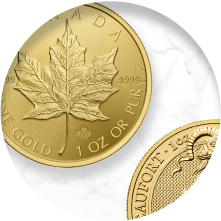


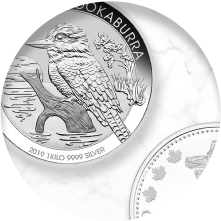
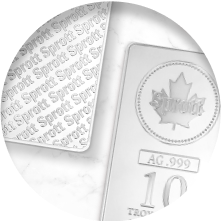

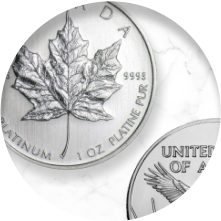

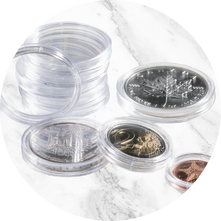
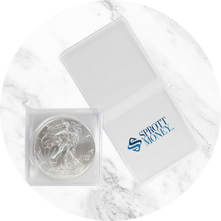


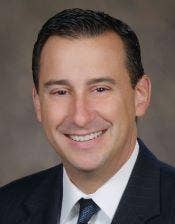
Looks like there are no comments yet.